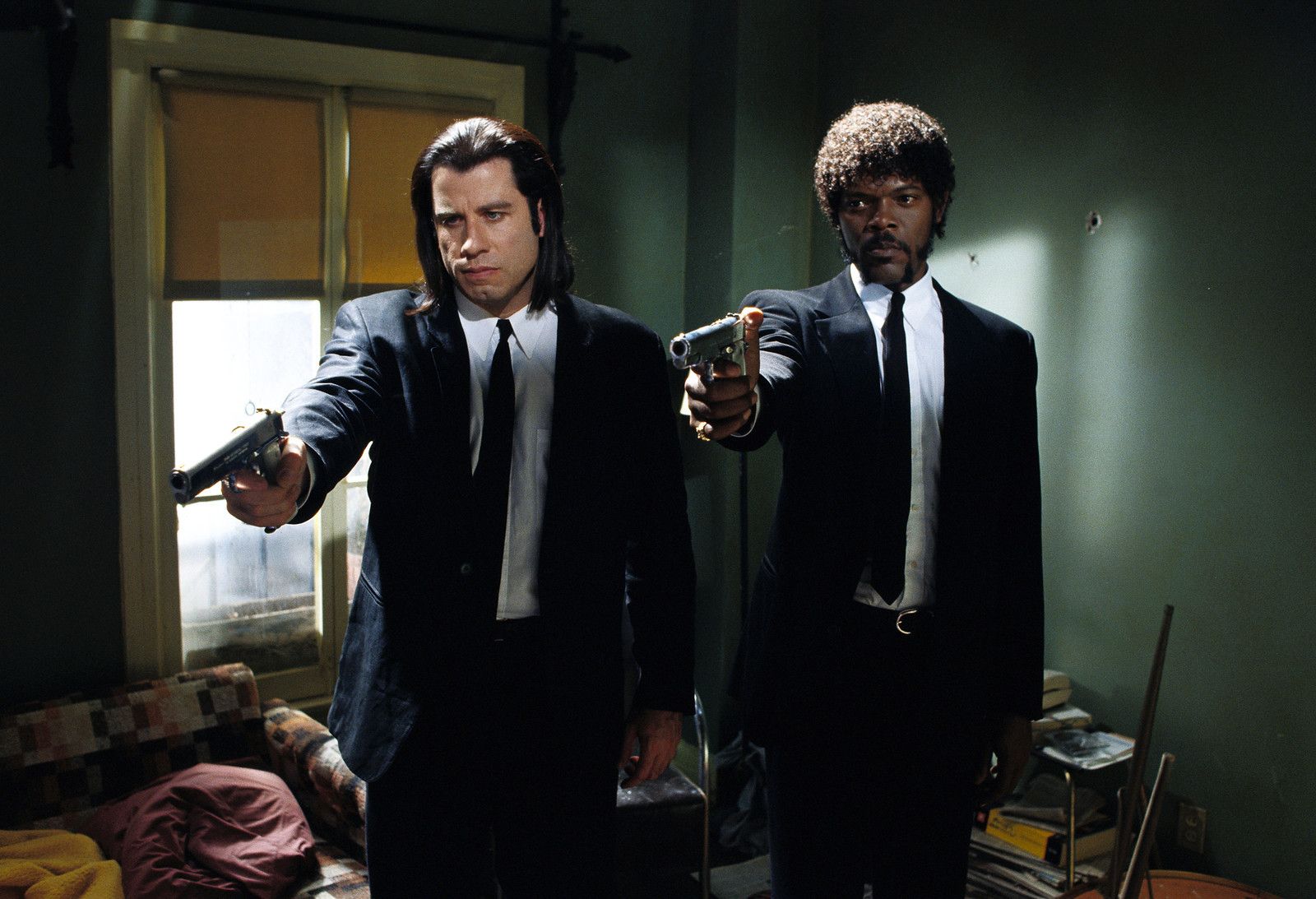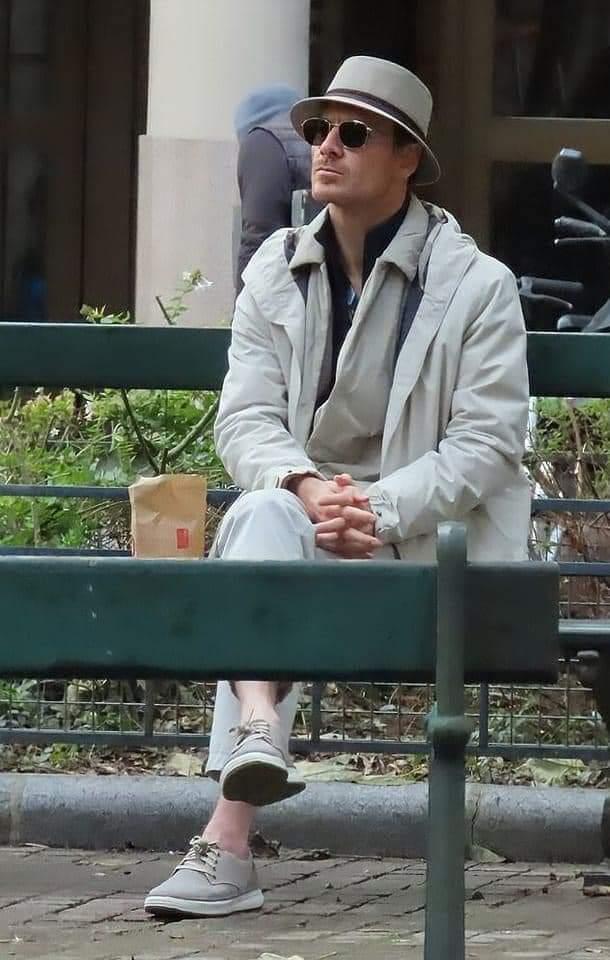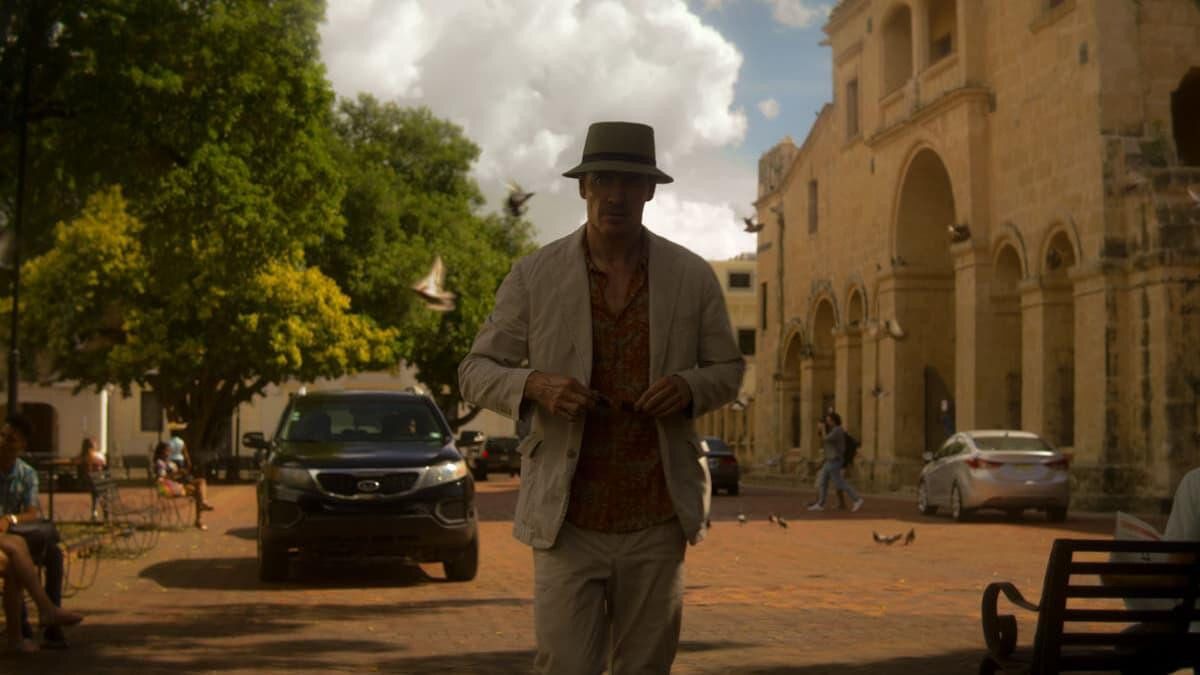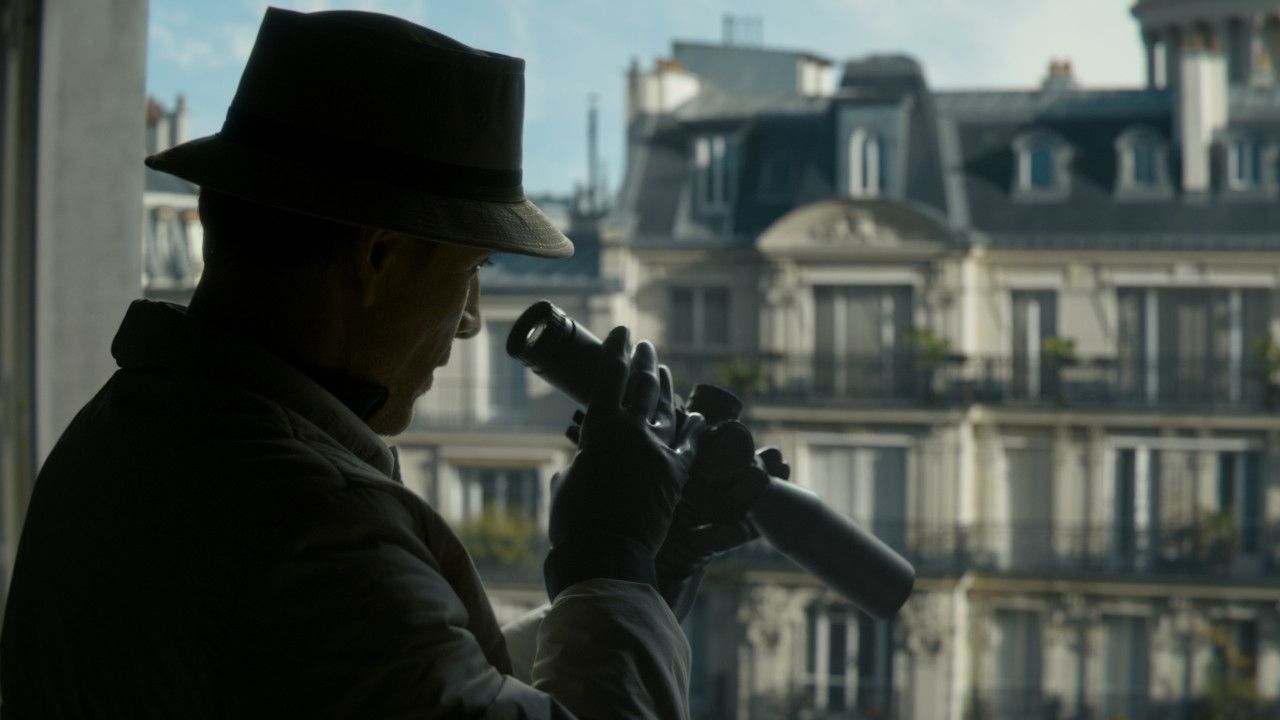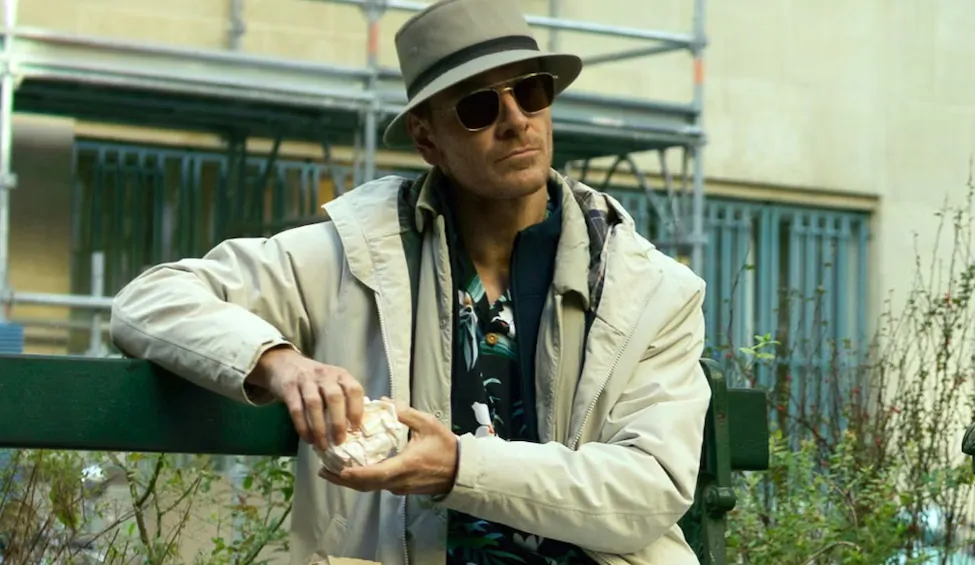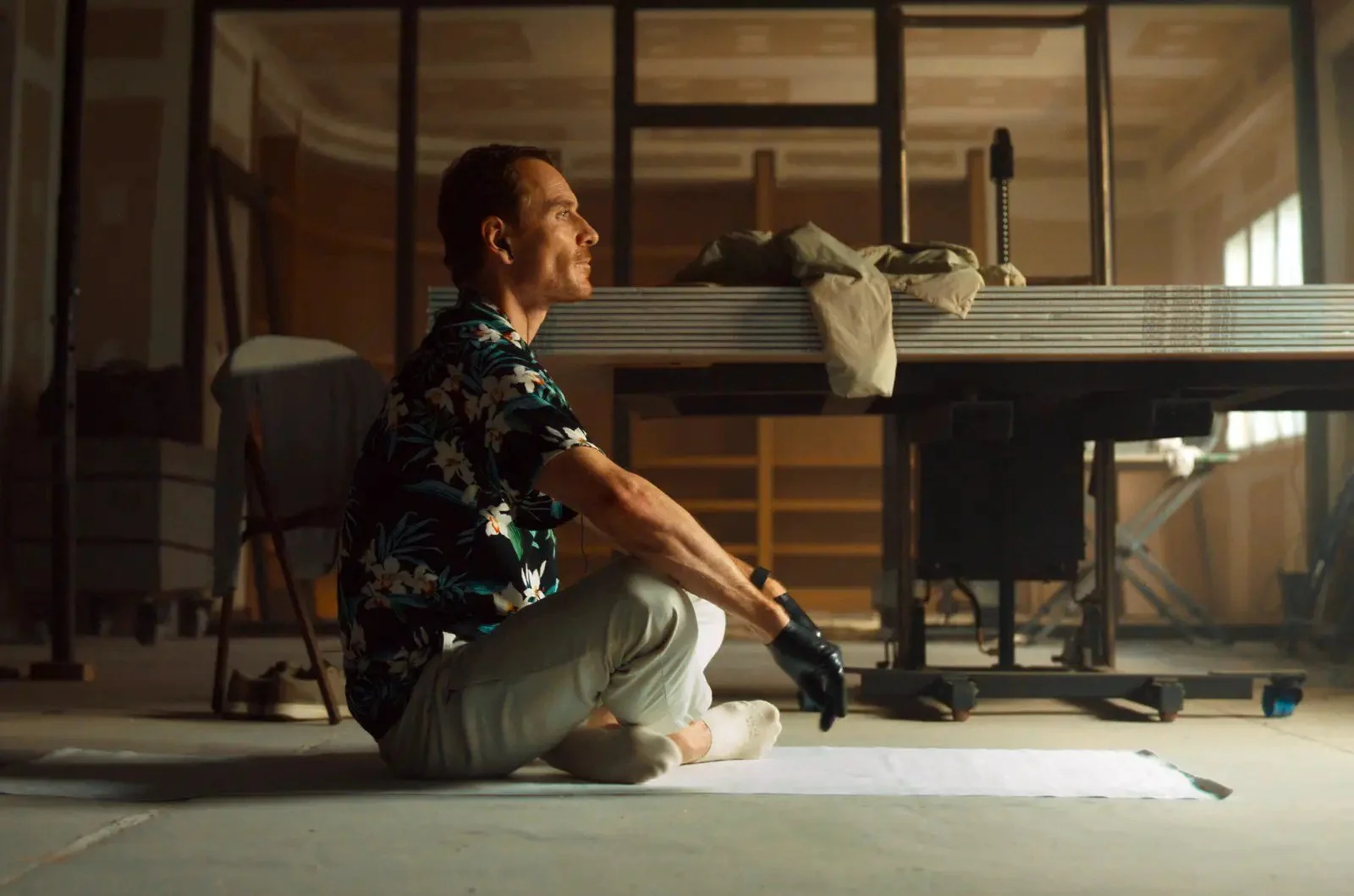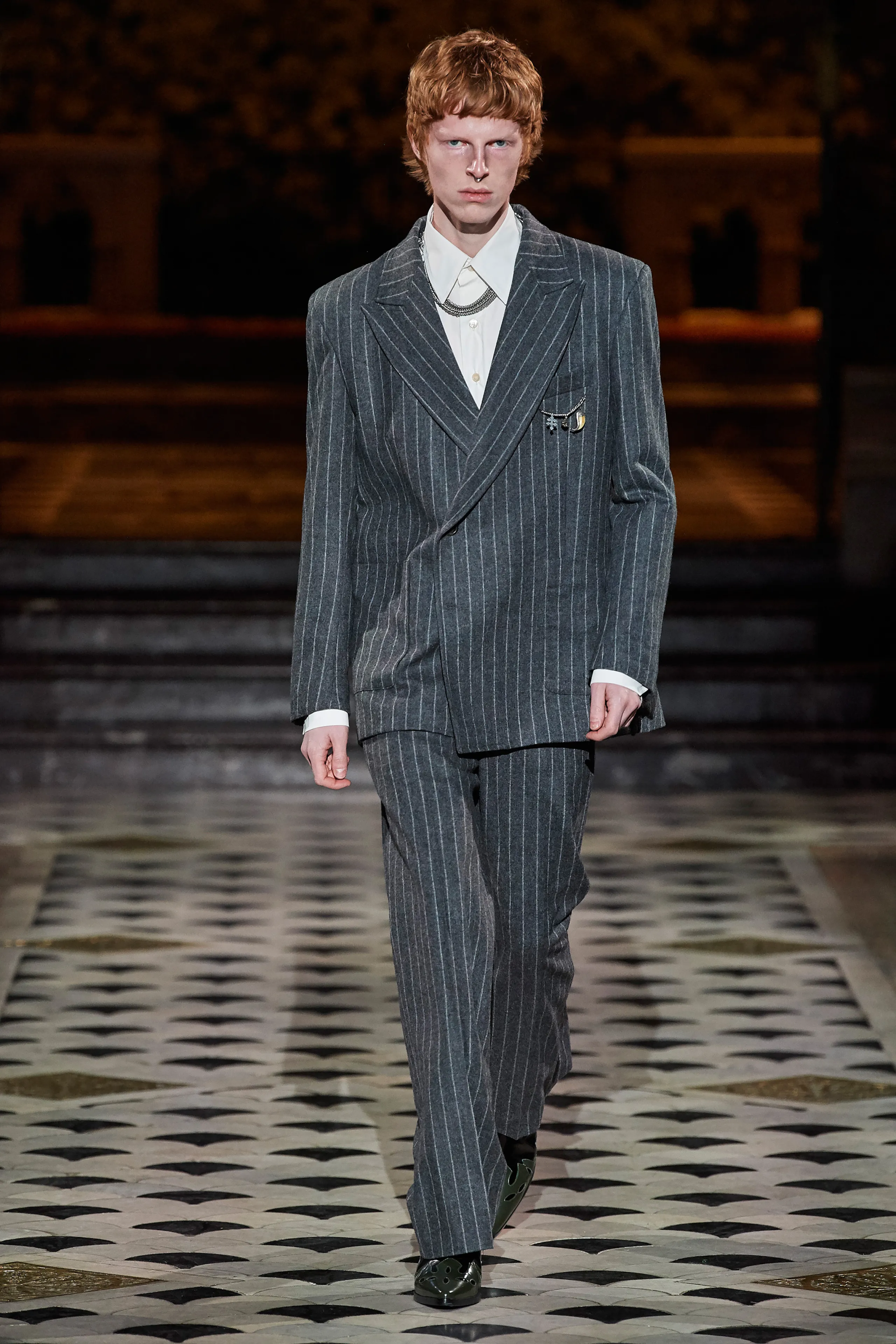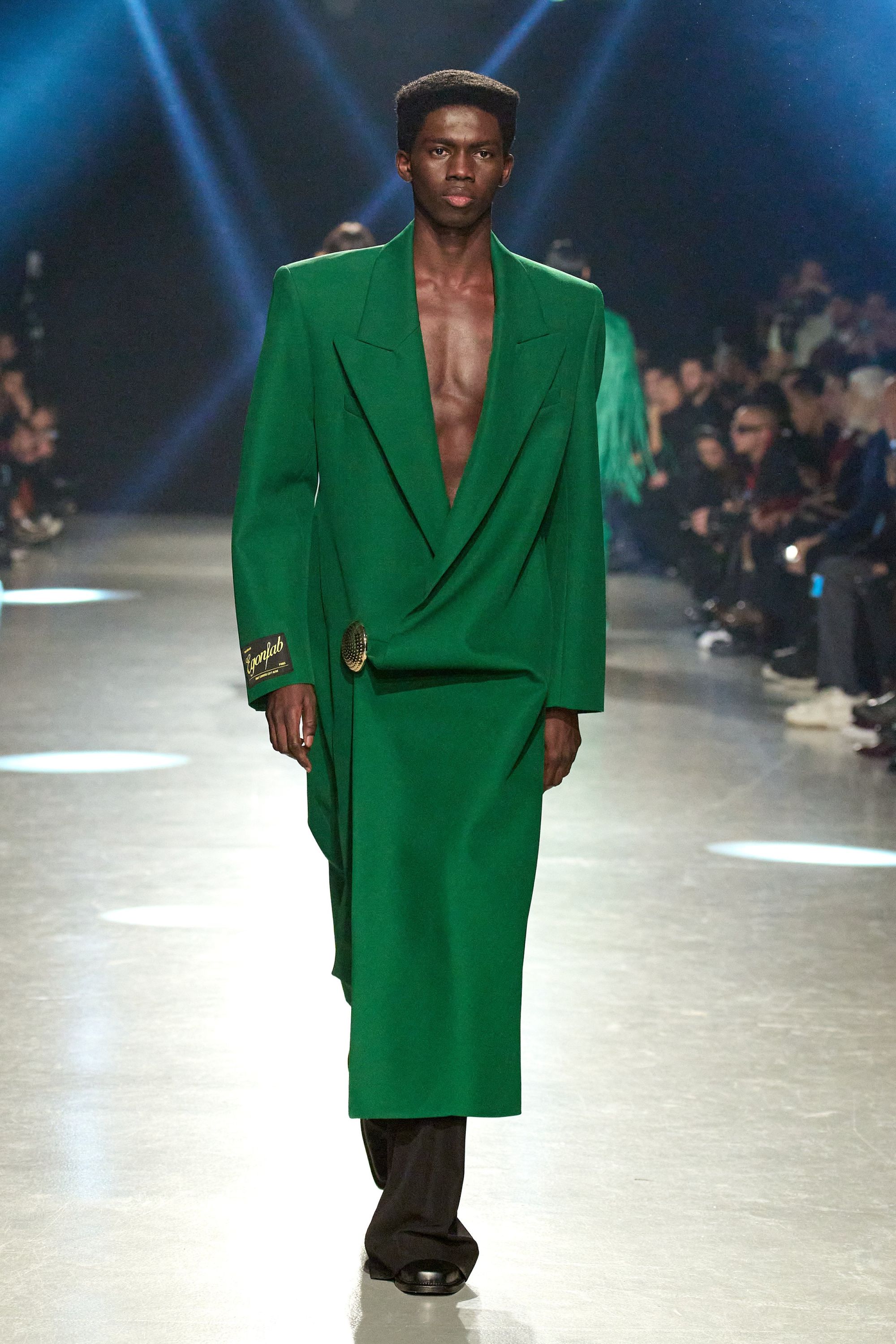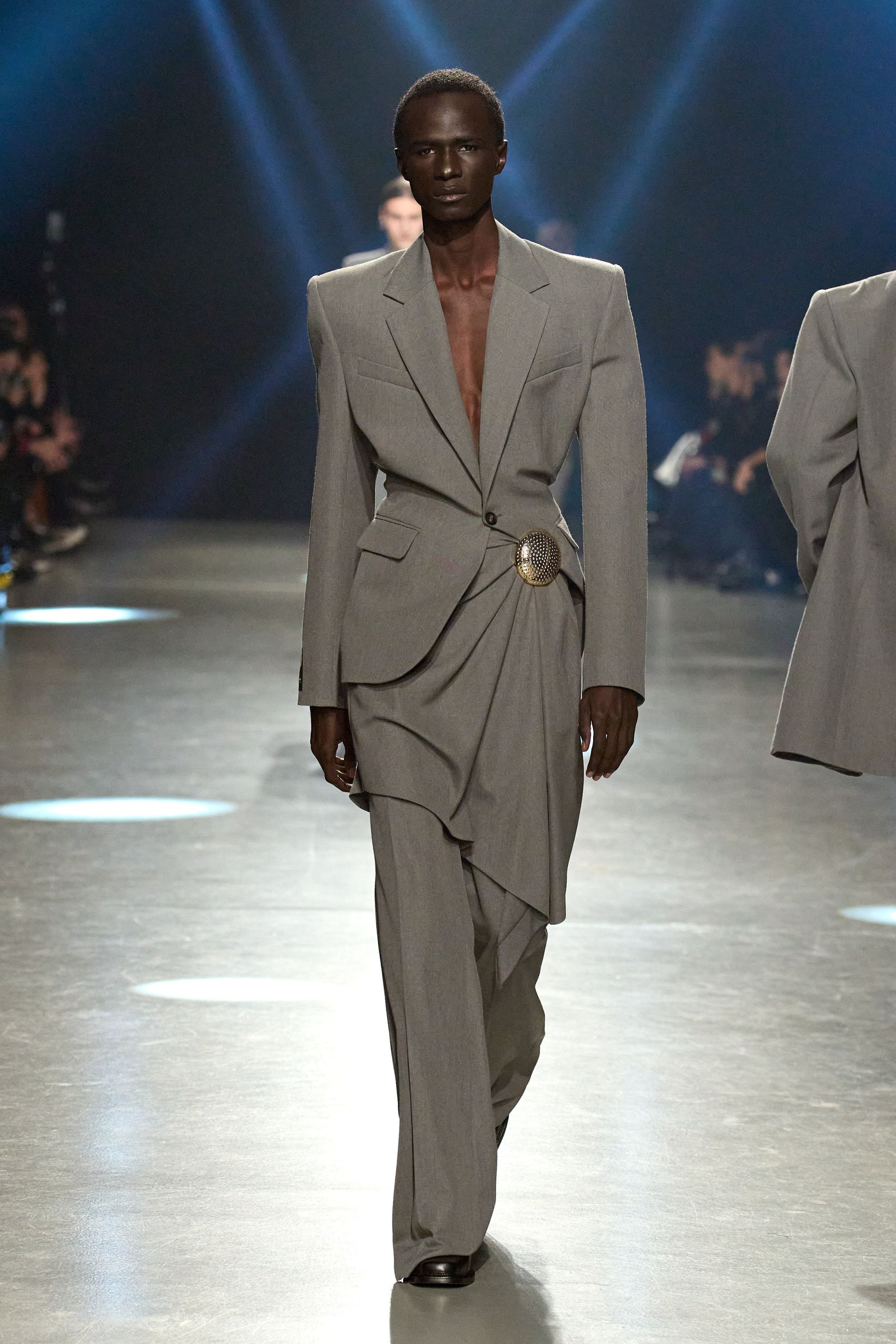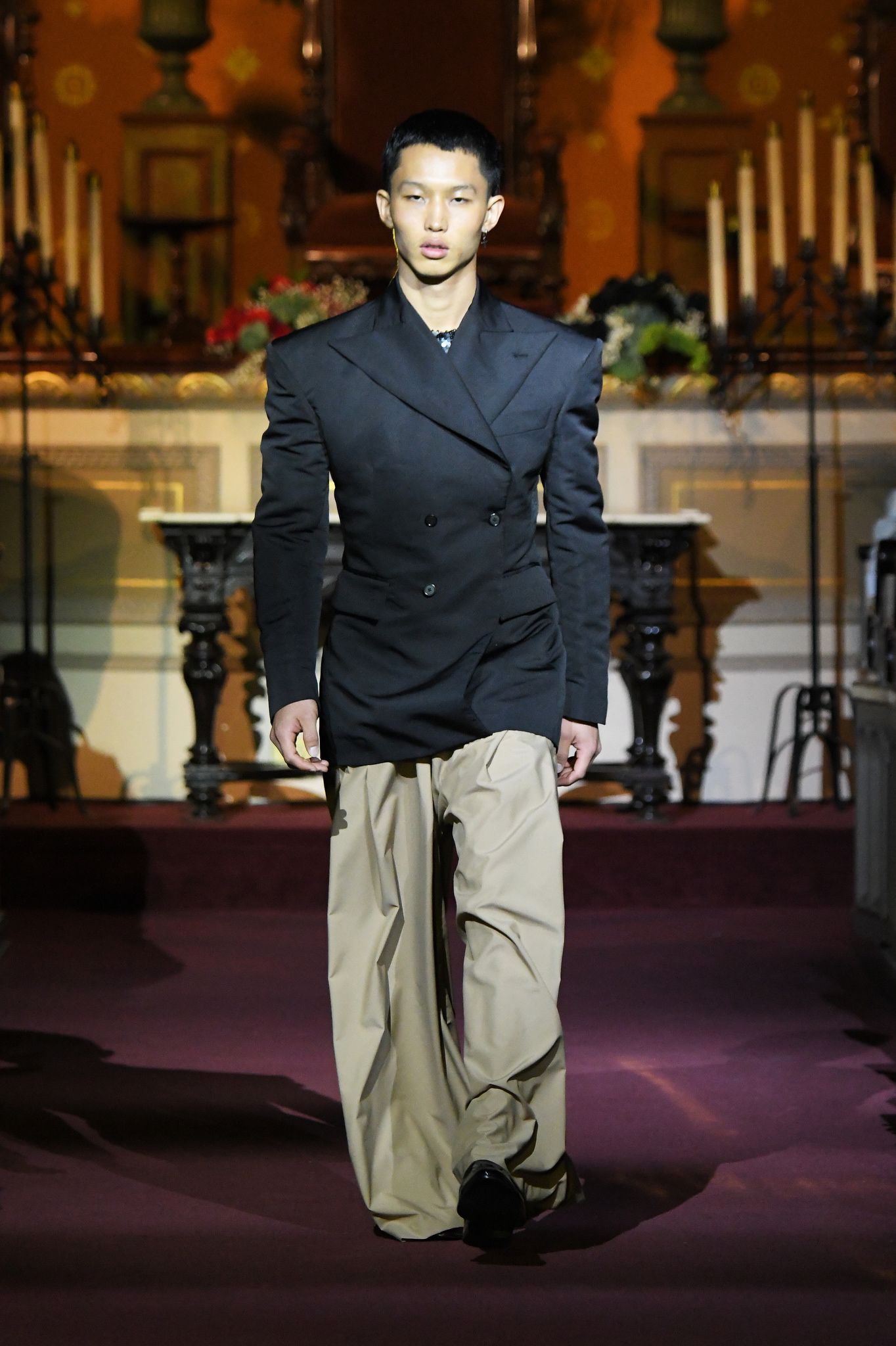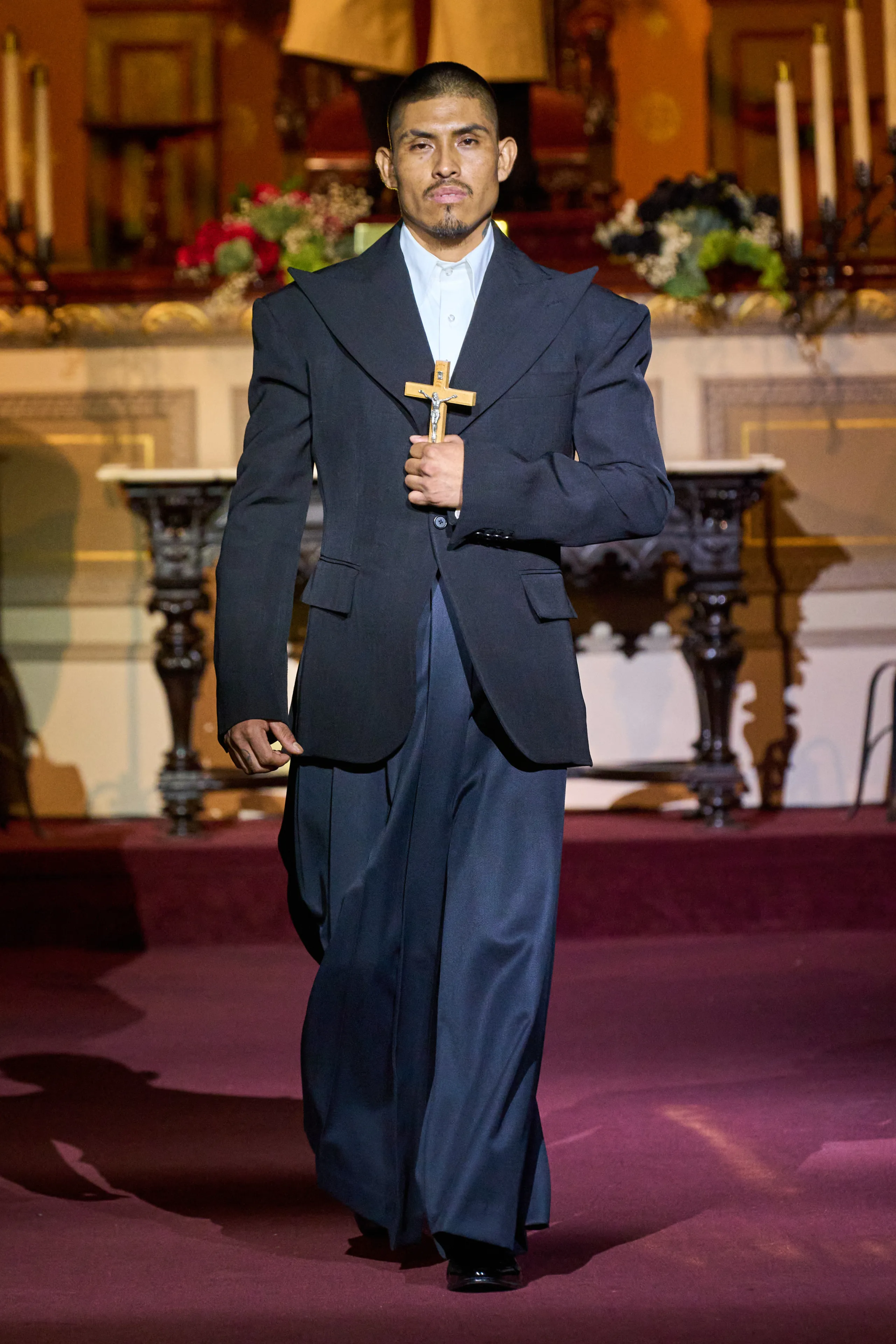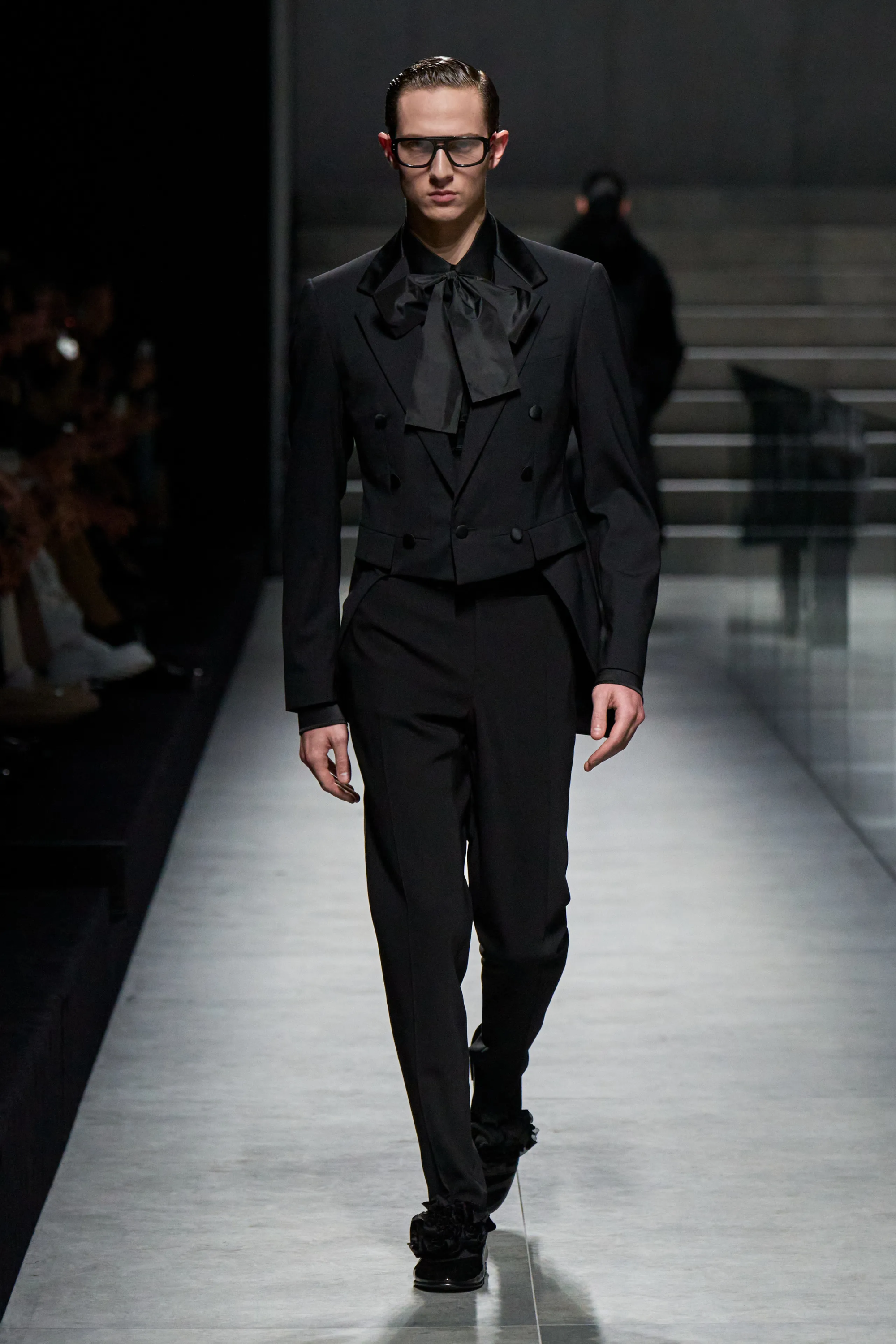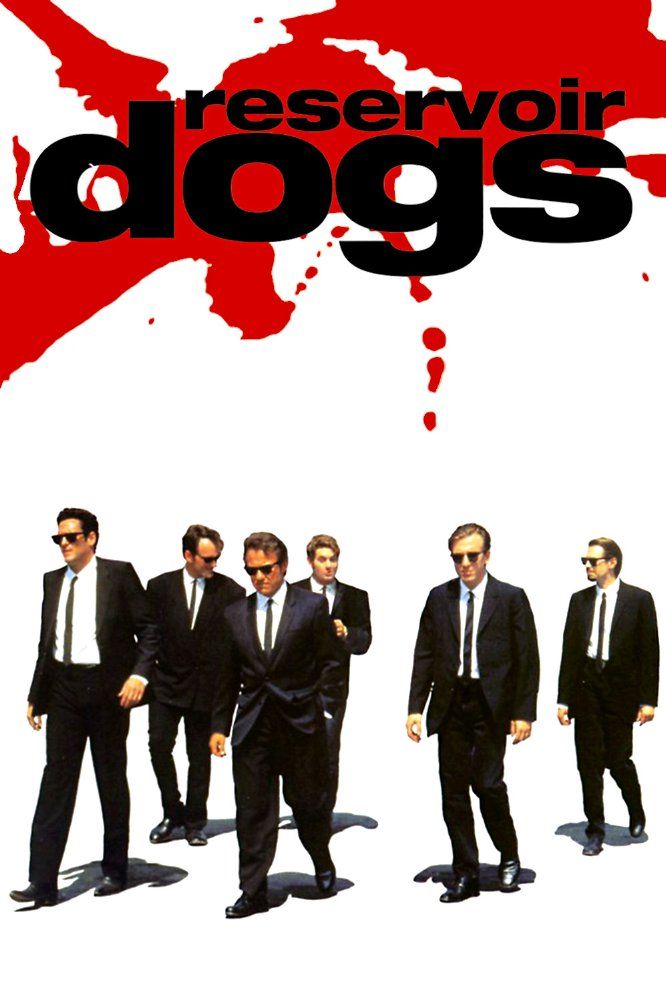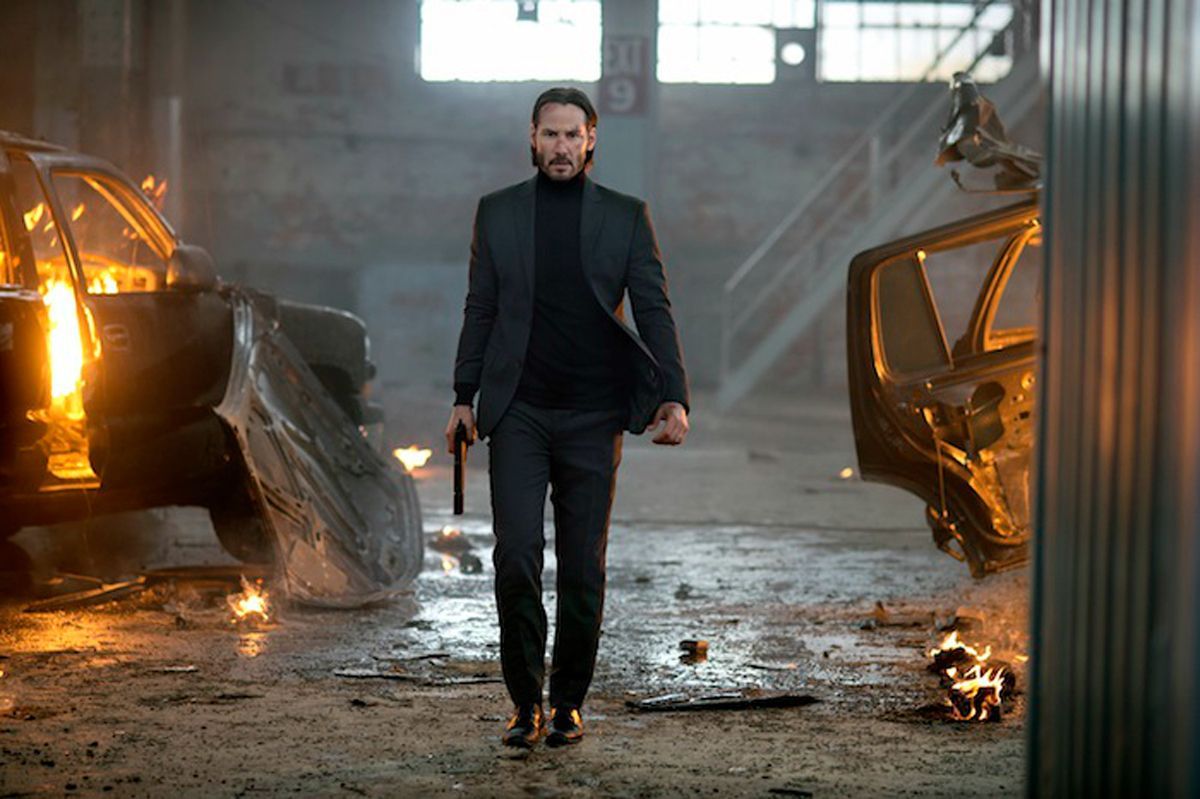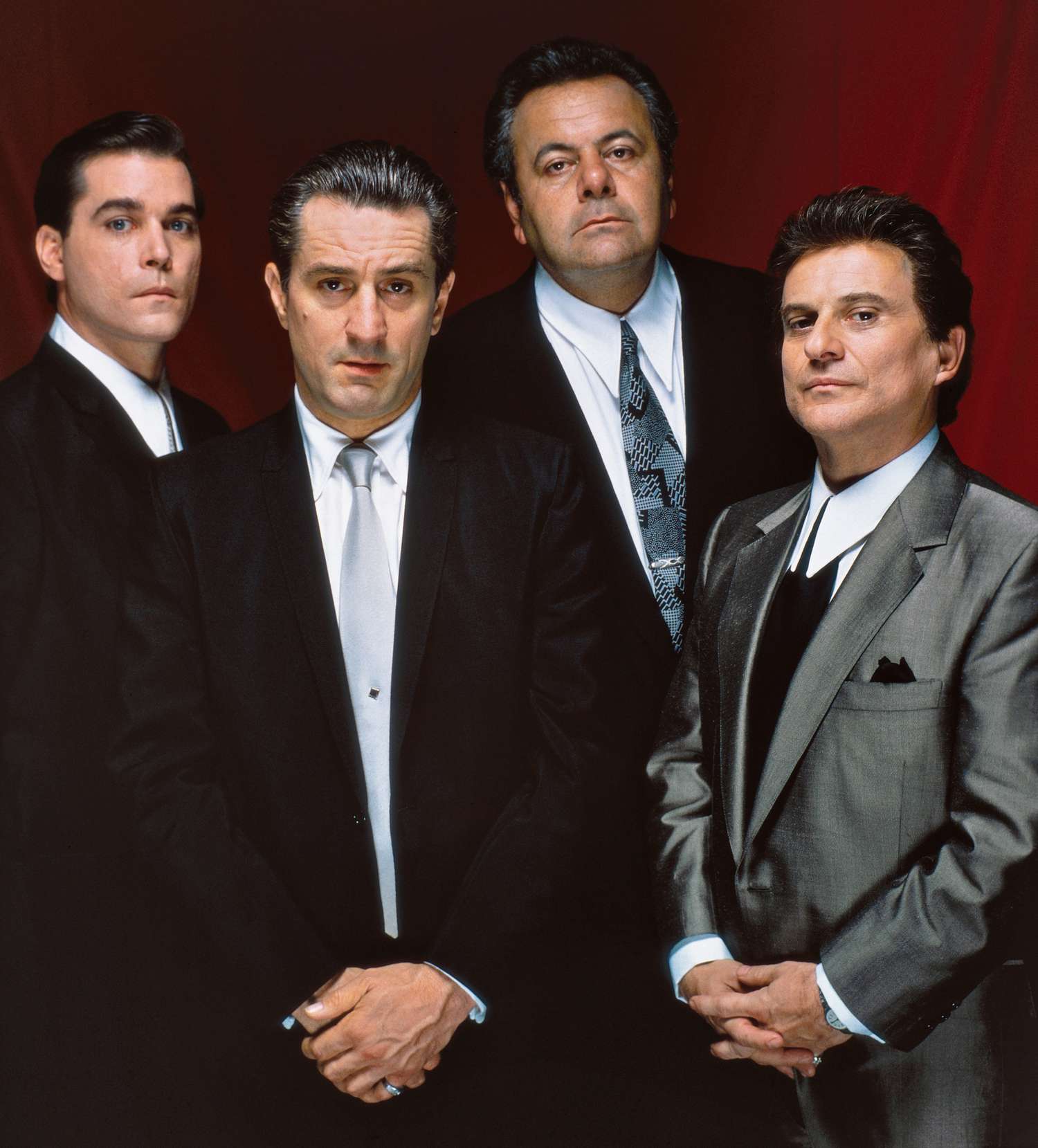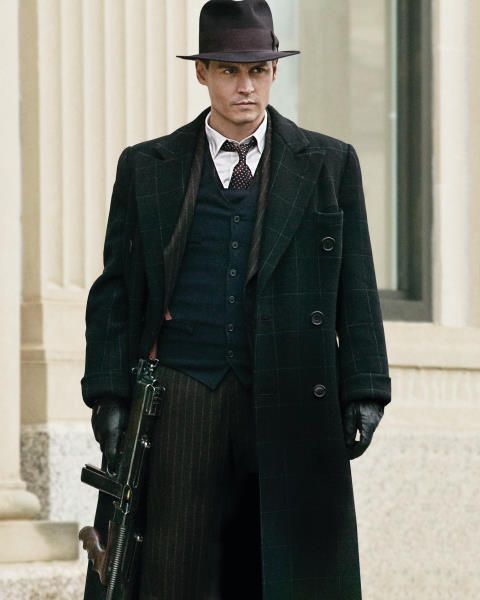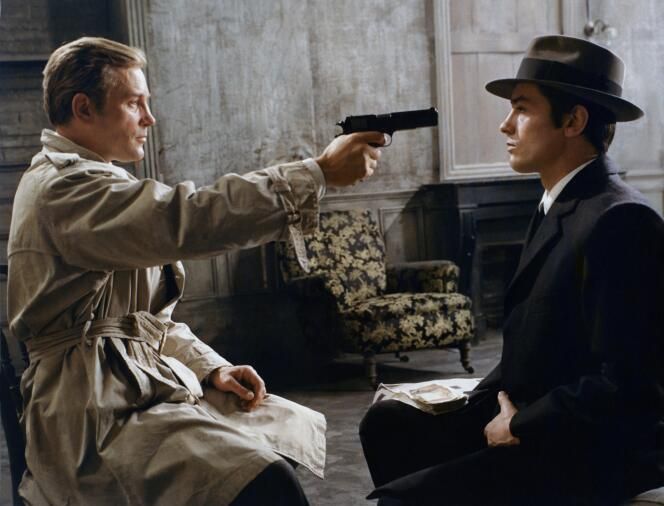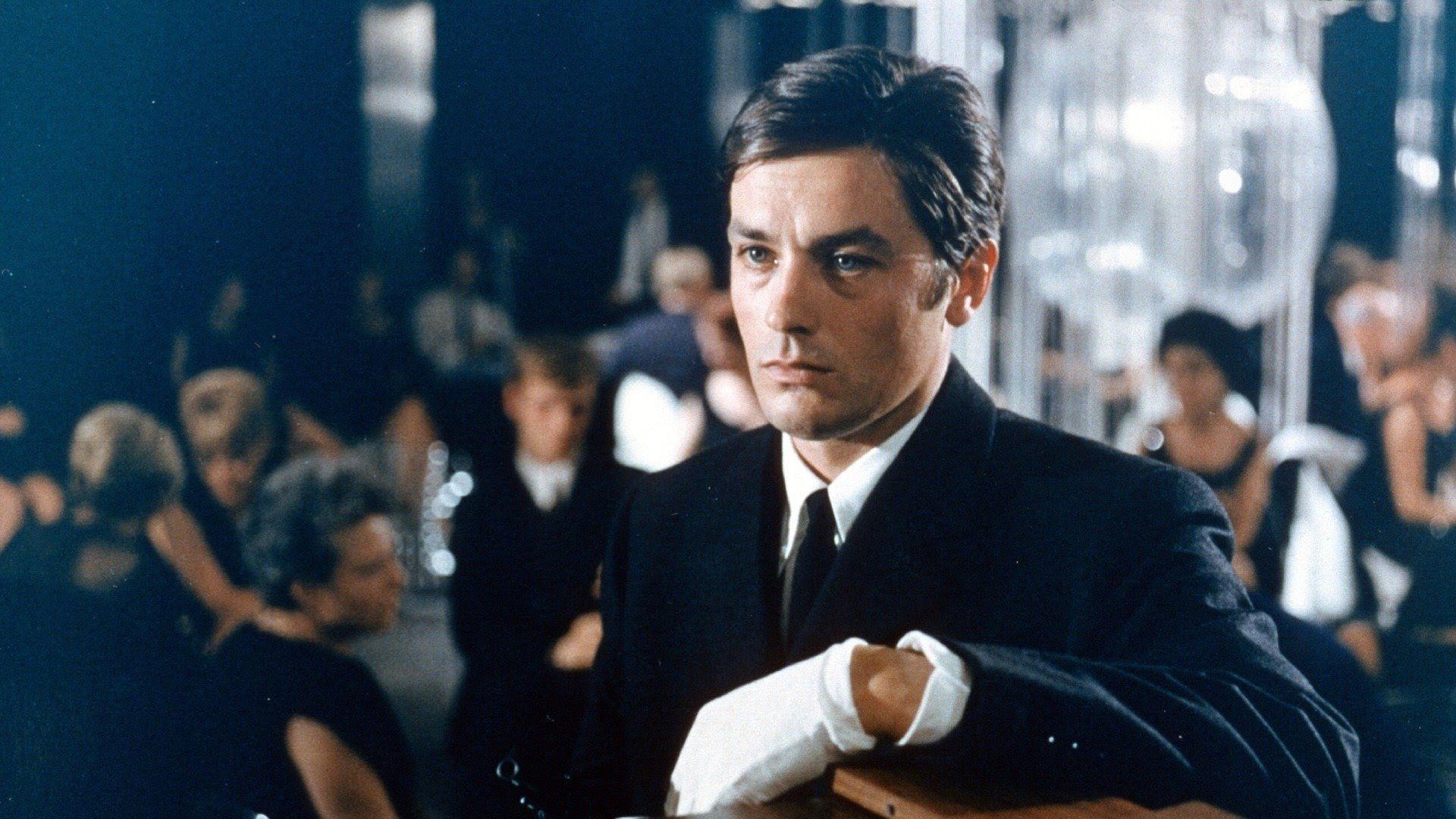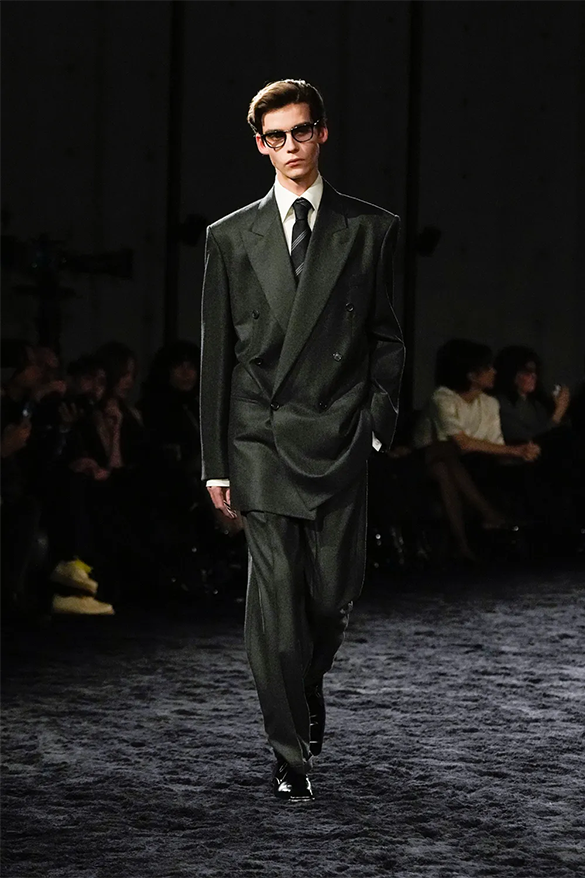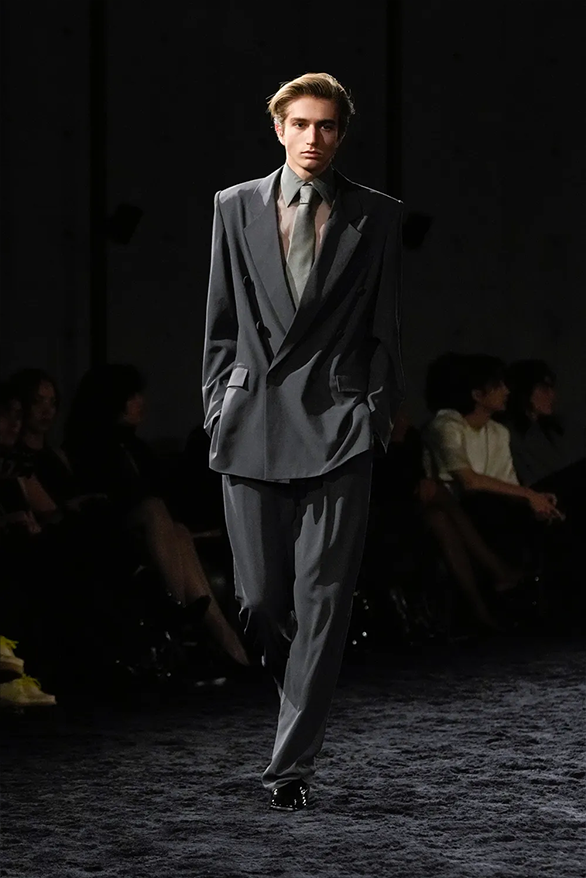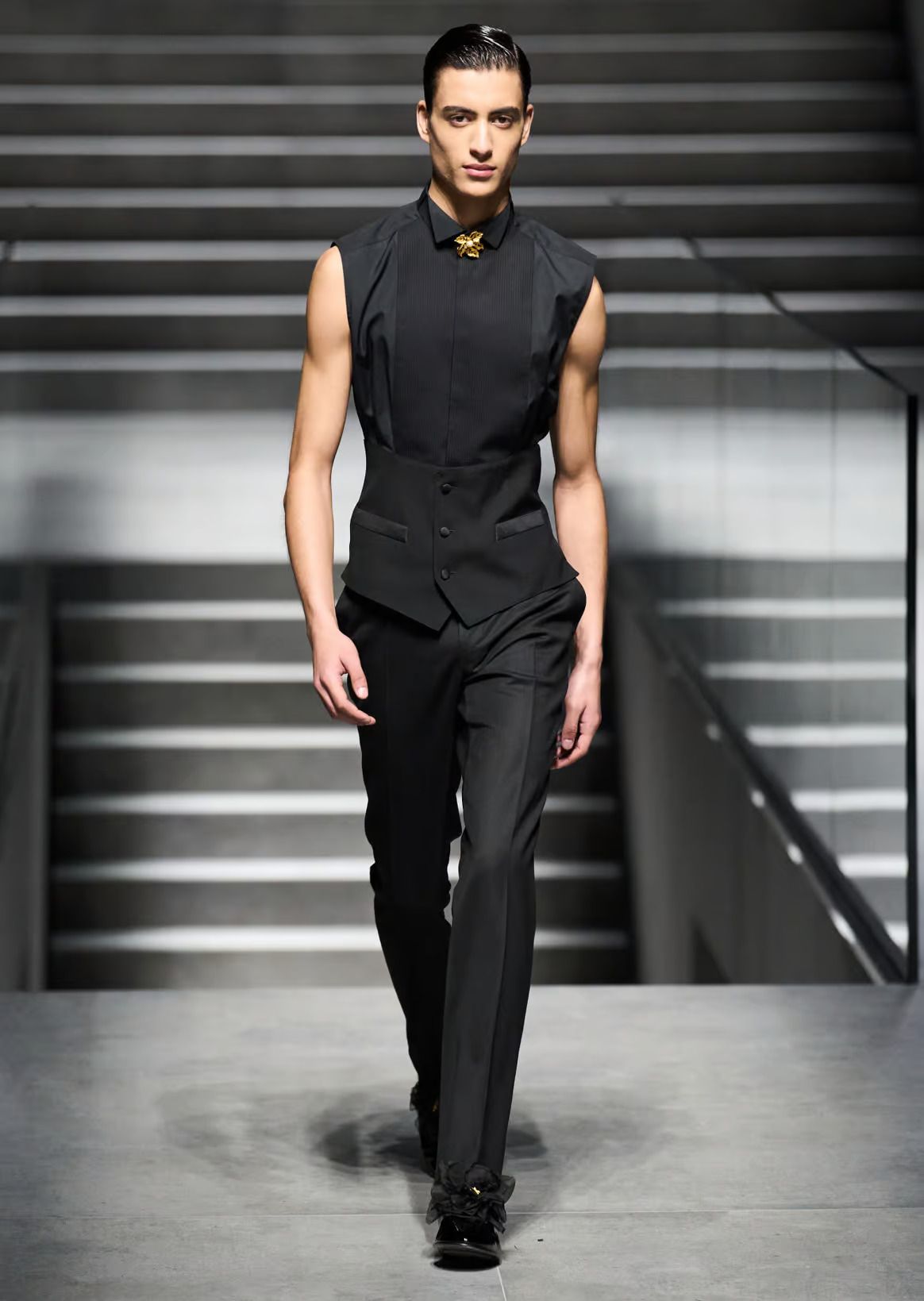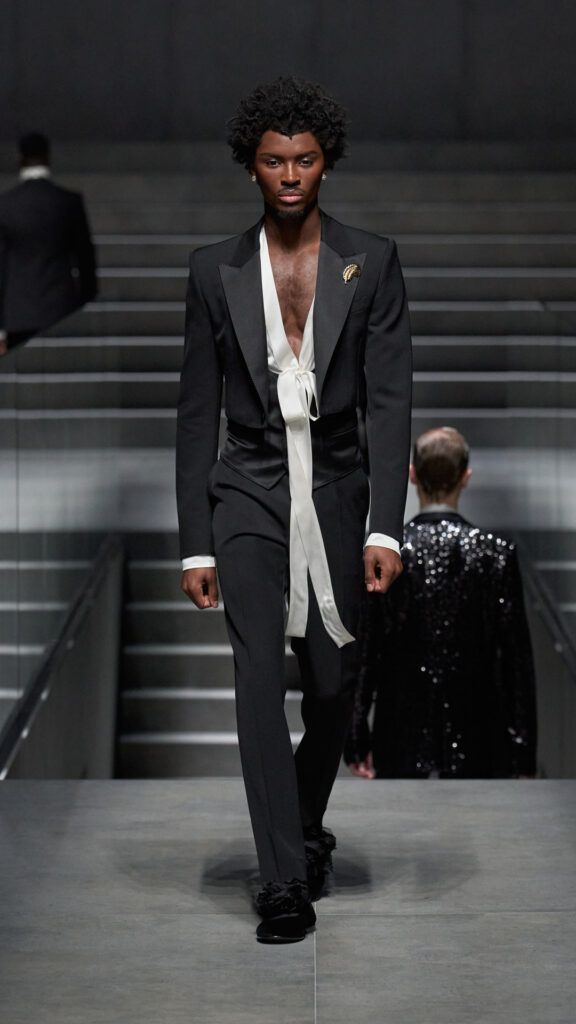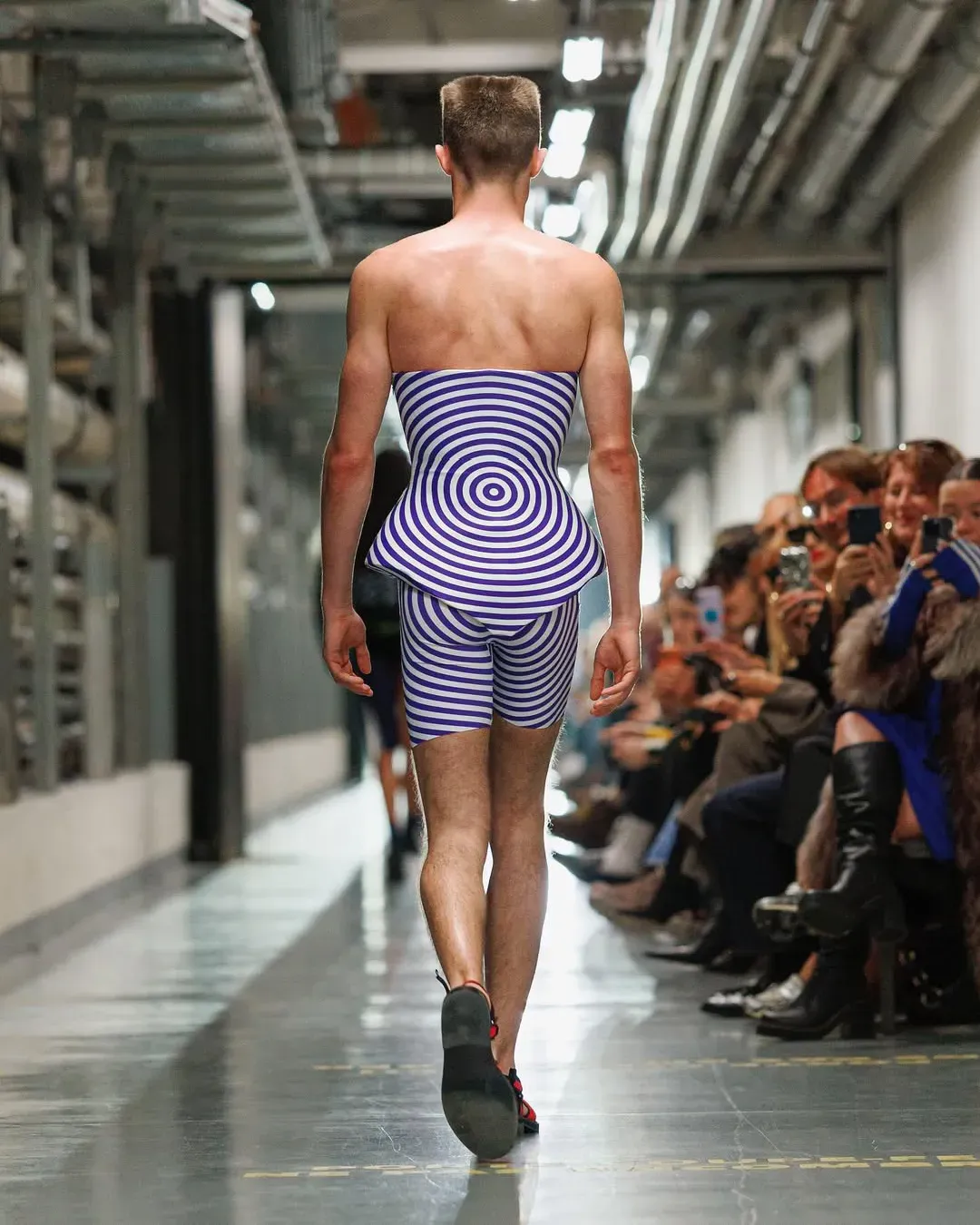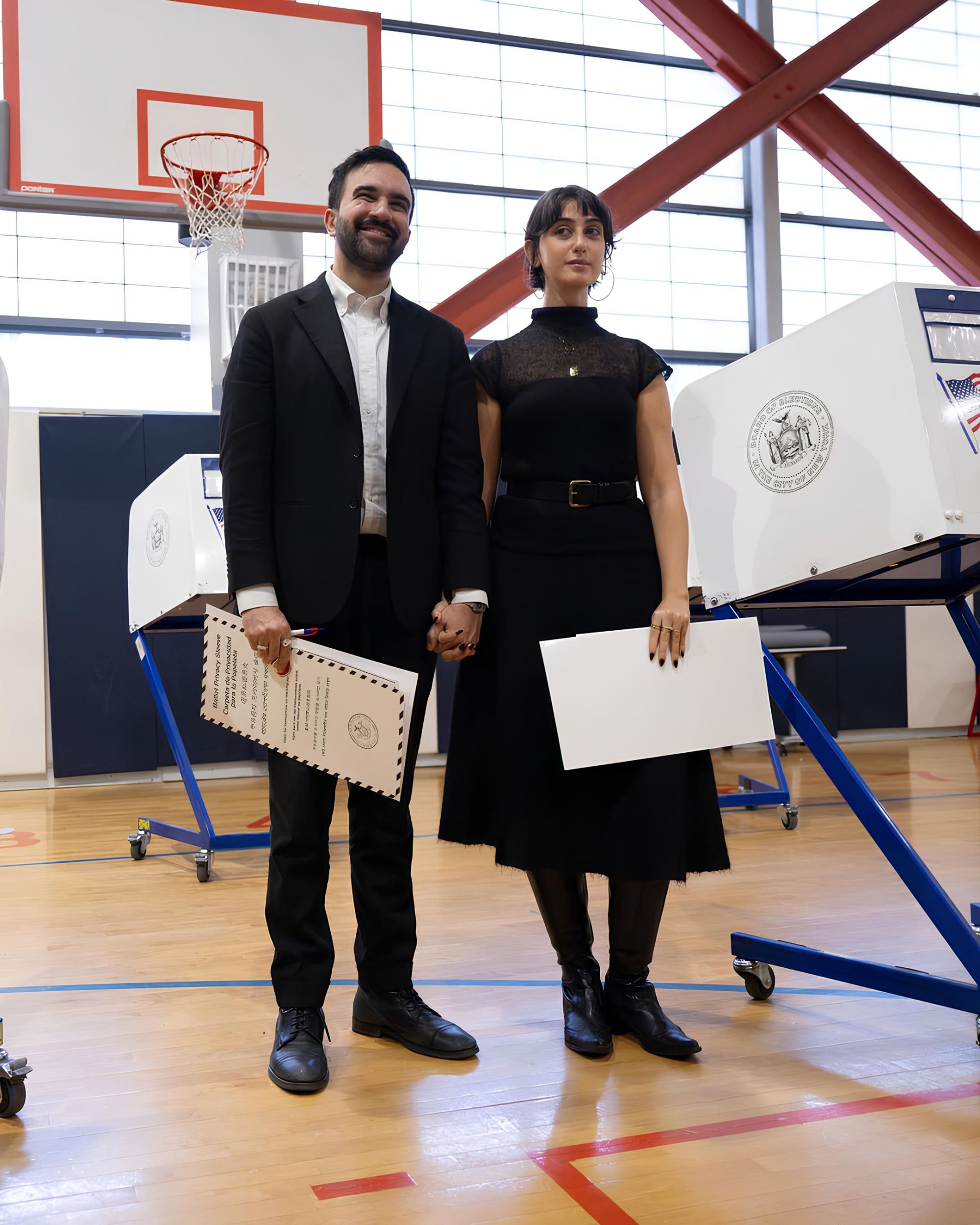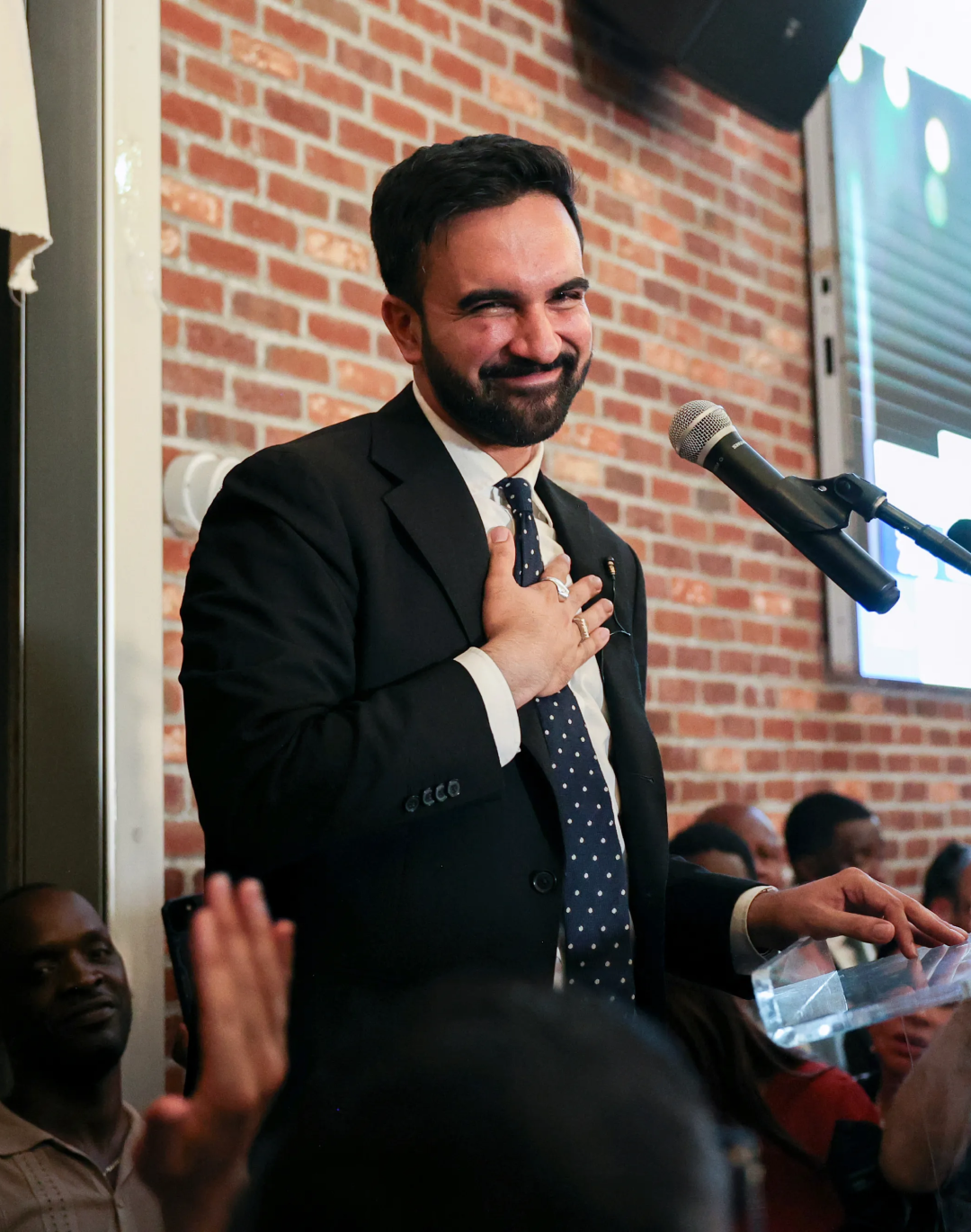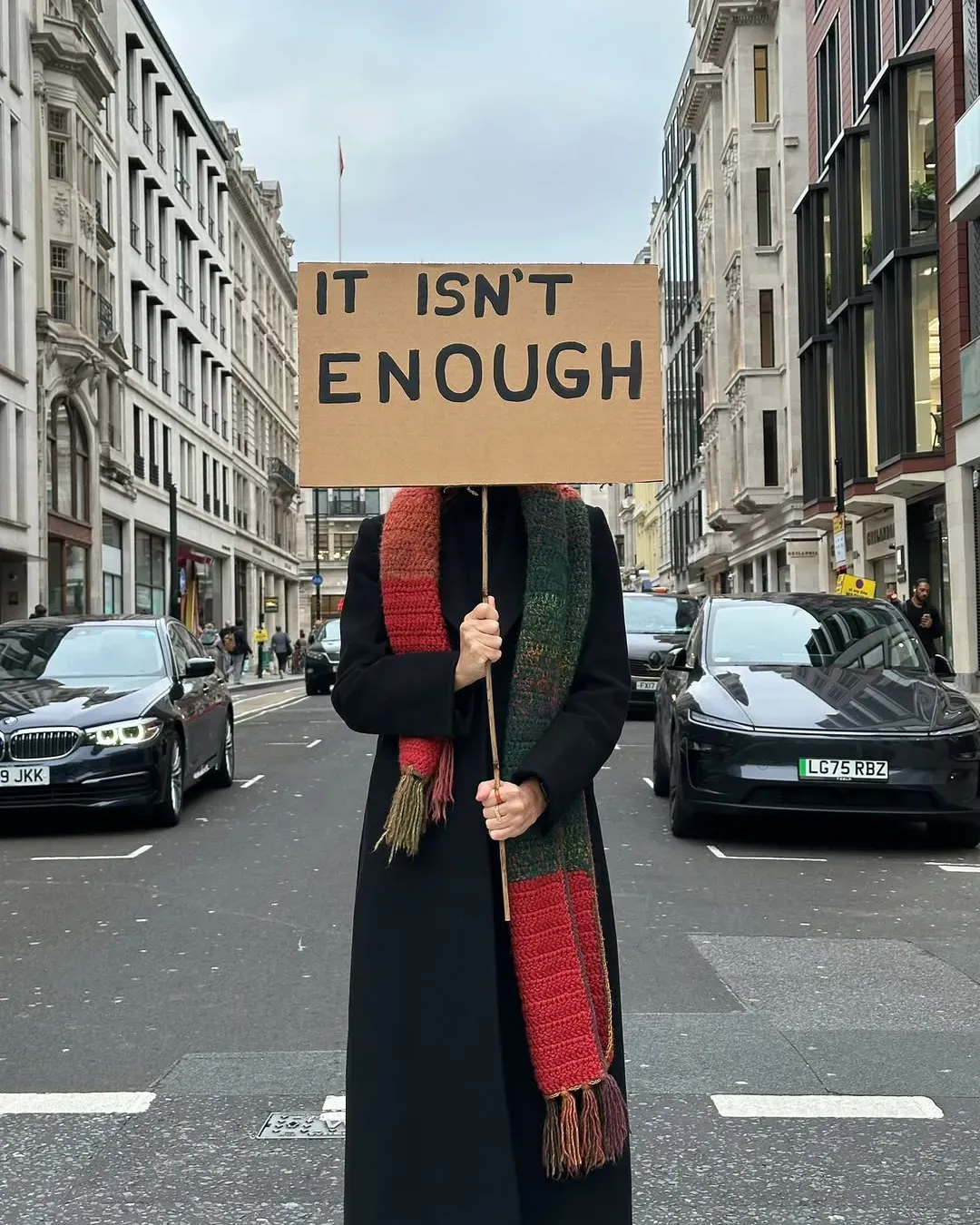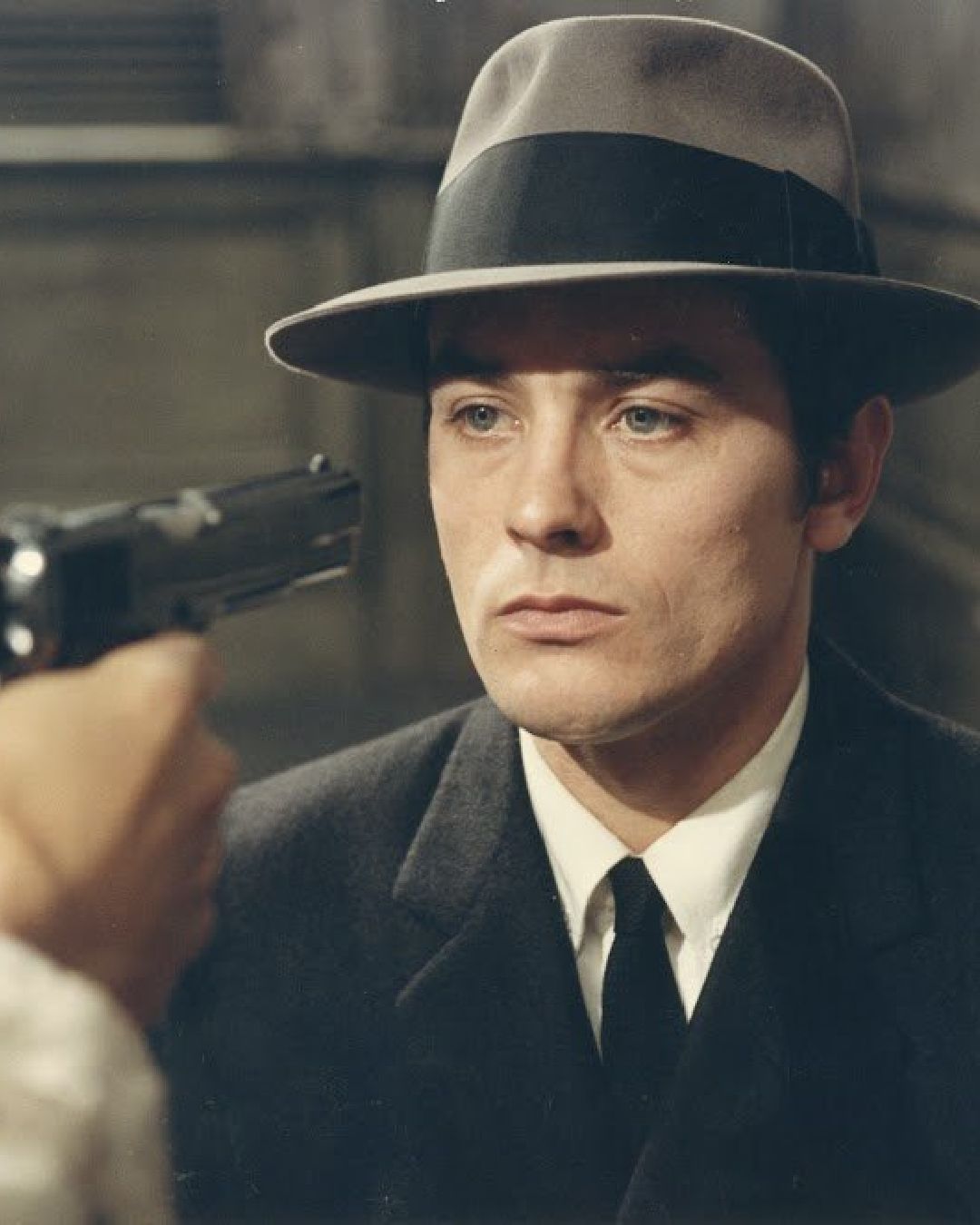
Le complet de crime, tendance ou cliché ? Signification de la tenue vestimentaire masculine entre le pouvoir, la criminalité et le genre
From the office desk to the bedroom, the men's tailored suit traverses everyday times and places, assuming multiple meanings. Most people, due to a deep-rooted cultural heritage, recognize in men's formal wear the sign of authority and power, associating gallantry and the traditional idea of "respectability" with a certain way of dressing; others, like some fashion and cinema creators, try to break this rigid ideological representation. Directors and designers interpret "the social uniform of the male" not only as office attire, but enrich it with erotic, criminal, and mysteriously perverse suggestions. In the latest men's collection by Anthony Vaccarello for Saint Laurent, for example, the theme of sensuality and sexuality evoked by the men's tailored suit is central. The "terrifying and languid suits," as Mark Holgate describes them in the review of the show on Vogue Runway, express in their classicism a delicate eroticism and a subtle femininity manifested through transparent shirts worn under jackets with a fluid cut. In this regard, Vaccarello uses the high-fashion technique of flou associated with women's fashion, combining materials with different textures, such as leather with softer ones like organza. On that occasion, the Belgian designer explained to the press that he was inspired by a nocturnal, mysterious man, halfway between Patrick Bateman of American Psycho and Julian Kay in American Gigolo: the formal attire thus hides the secrets of perversion and can become a seduction tool.
The crime-suit in contemporary fashion
Following in the same vein as Vaccarello for Saint Laurent, the designers at Dolce&Gabbana have always expressed their interest, in both men and women, in the erotic-criminal dualism evoked by the men's tailored suit. In some seasons, the suit takes on a more aristocratic and refined allure: we notice this from tuxedos worn with silk shirts or fur coats reminiscent of "a young Helmut Berger in a Visconti film," as the designers say about the Sleek show, men's FW24. In other collections, however, the Dolce&Gabbana man resembles more the Sicilian "masculu," the mobster wearing pinstripe suits and rosaries around the neck as in the brand's latest campaign shot by Steven Meisel. Even some emerging brands have delved into the aesthetics of the crime-suit: French designer Louis-Gabriel Nouchi explicitly drew inspiration from the broker-serial killer played by Christian Bale in one of his recent collections, parading models with bloodied faces. From the Punk Nostalgia of Enfants Riches Dèprimès to the "new masculinity" of Egon Lab, as written by Tina Isaac-Goizé, the codes of the men's suit interest the new generations of designers who, with different backgrounds and perspectives, know how to reinterpret them in contemporary times. Willy Chavarria reinterprets the men's formal suit with seventies silhouettes, engaging in a dialogue with the Mexican aesthetic of "cholo boy," a term identifying a particular subculture of Latin American (specifically Mexican) criminal gangs. In this context, artists like Mahmood and Bad Bunny, both often dressed by Chavarria, have embraced the "outlaw" aesthetic on several occasions: in the song Monaco, the Puerto Rican rapper, besides using a sample from The Godfather's soundtrack, sets the music video in a typical Italian restaurant in New York frequented by bosses and gangsters, among whom, not surprisingly, is Al Pacino.
The crime-suit in cinema
Certain cinematic genres, from noir to thriller, have made the aesthetic of the hitman in a formal suit their trademark, such as The Killers by Don Siegel, a 1964 film that inspired cult films by Tarantino like Pulp Fiction and Reservoir Dogs, to John Wick by Chad Stahelski in 2014. We recall an emblematic scene from the film Goodfellas (1990), where young Henry Hill, raised in a culture of "bread and the mob," dressed to the nines in an impeccable tailored suit, presents himself to his mother who, in desperation, reproaches her son for dressing like a gangster. This cinematic fragment helps us understand how men's formal attire found its own space and specific visual declination in criminality. In Japan, in the tradition of gangster movies, the collaboration started in the mid-1990s between director Takeshi Kitano and designer Yohji Yamamoto has been of great importance: the two creators rethought the aesthetics of Western criminals by connecting Yamamoto's post-atomic minimalism with Kitano's raw violence. Some works from the filmography of Michael Mann, such as Collateral and Public Enemies, cannot go unmentioned, in which the director shows a particular aesthetic sensitivity for "the killer's uniform." In the former, the hitman Vincent, played by Tom Hanks, wears a gray, sober, and clean suit that, however, conceals the rottenness of his crimes and his criminal identity. In the gangster drama of 2009, Mann tells the story of notorious American felons like John Dillinger and Baby Face Nelson during the Great Depression. The director, faithful to historical news events, constructs an aesthetic around the characters perfectly in line with the dress codes of that time: suits with waistcoats, wide-brimmed hats, and leather gloves, indispensable to leave no trace on the weapons used for the crimes. Formal attire thus becomes in these narratives an undercover uniform that creates an aura of mystery around the characters, but also of melancholy and loneliness as in Le Samuraï by Jean-Pierre Melville.
Fashion and cinema have sought to tarnish the impeccability of men's formal attire by revealing its dark nature. So why then does formalwear, especially on a male, in the collective consciousness identify more as a gentleman than as a murderer? The answer lies in the fact that, as the French sociologist Bourdieu said, our society has exerted a kind of symbolic violence, that is, the imposition of the aesthetic category of the gentleman in a suit and tie, so validated and internalized that it can never be completely deconstructed. In the aforementioned films, especially in the 1960s and '70s, hitmen in suits blended in with the common man because for a long time most men, due to what is commonly referred to as the "great renunciation," dressed in this manner: today, however, formal attire indicates an exception, suggests institutional rigor, and emphasizes social aristocracy. Filmmakers have realized how the aesthetics of the crime suit has become a cliché: perhaps this is why Michael Fassbender, the protagonist of the recent film The Killer as a cynical professional criminal, prefers to blend in with the crowd by dressing like an anonymous, sloppy German tourist. A "man in a suit," today as it stands, could be an easy suspect: a sloppily dressed male, on the other hand, is just one among many.






















